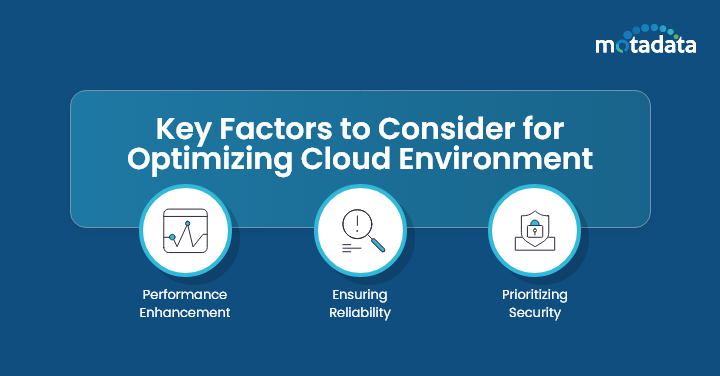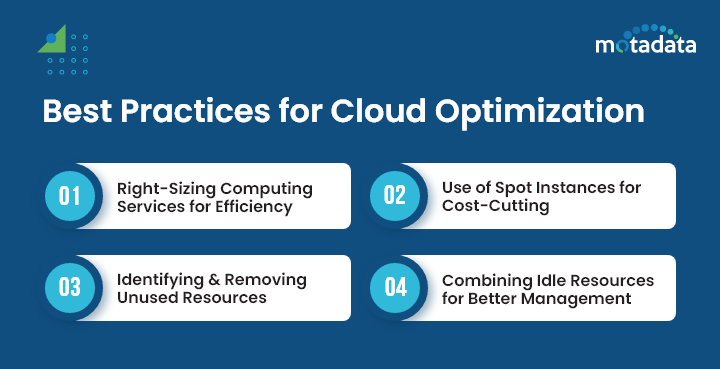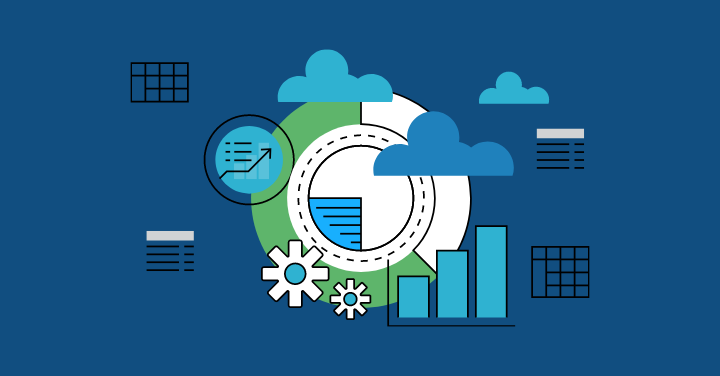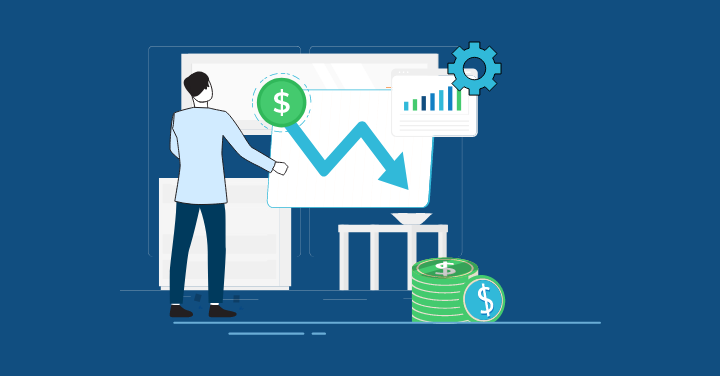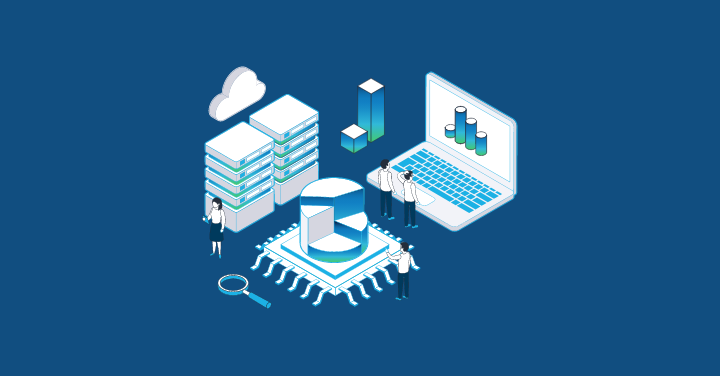Cloud computing has completely changed the way businesses operate nowadays. Businesses can now seamlessly scale their operations thanks to Cloud computing’s scalable and flexible features. With the help of cloud computing technology, businesses can easily adapt to changing demands and manage complex operations without any hassle.
But in order to process, store, and provide services, the entire cloud computing process demands access to a variety of data center resources. Managing cloud data centers might not sound like a major task but it comes with various challenges, especially in terms of resource usage.
With efficient resource utilization, cloud centers will be able to maximize their computing power and storage. However, to achieve this goal. you require a proper strategy and the right tools.
Using cloud infra monitoring tools, businesses can easily measure network performance, track resource patterns, and usage, as well as make well-informed decisions with insightful reports.
Before we get into more details, let us understand the importance of cloud optimization in resource utilization, key factors, and best practices.
The Importance of Cloud Optimization in Resource Utilization
Cloud optimization is vital for any business that wants to improve the cost-efficiency of its cloud resources. An efficient cloud optimization plan includes more than just cloud cost optimization.
Enhancing software quality, inter-team cooperation, application performance, and continuous feedback throughout the company are all included in cloud optimization.
When migrating to the cloud, a solid plan for cloud optimization helps guarantee both a short-term and long-term return on investment. As company processes move from an on-premises environment to the cloud, it also facilitates an improvement in developer productivity.
For companies wanting to grow while reducing cloud expenses and cutting waste, cloud optimization is crucial. It can assist in figuring out how best to divide up cloud resources across various use cases, cut down on unnecessary spending, increase transparency into expenditures, and maximize the use of available cloud resources. Additionally, it can aid businesses in more accurate budgeting and reporting to executive teams.
With the help of network monitoring tools, businesses can achieve this goal as it offers in-depth visibility into different aspects of cloud infrastructure and services. It helps businesses track bandwidth usage, latency, and other key factors and identify bottlenecks in real time. These detailed insights can be later used by professionals to optimize resource allocation.
Optimizing resources will not only save on excessive usage but also eliminate the use of waste or unnecessary expenses. Additionally, optimizing different sections of your cloud infrastructure and services will improve your security and reduce risk.
Key Factors to Consider for Optimizing Cloud Environment
There are several factors that play a key role in optimizing a cloud environment, including:
Performance Enhancement
In order to guarantee that services and apps operate effectively and live up to performance standards, cloud environments must be optimized for performance improvement.
For example, businesses must ensure that codes are optimized, applications must be tuned, and other cloud services are being properly utilized. If you are unsure of how to track all of these settings, you can invest in network monitors and improve overall system performance.
Ensuring Reliability
Another key factor to consider is reliability as downtime for a limited period can cause serious consequences and loss to businesses. Hence, make sure to prioritize reliability when preparing strategies for cloud optimization.
Constantly monitor cloud usage, cloud spending, data transfer fees, as well as other reserved instances and take corrective actions. Track the potential resource bottlenecks, minimize disruptions, and maintain continuous operations.
Prioritizing Security
Prioritizing security in cloud optimization techniques is also crucial as it helps protect all confidential information from unauthorized users and guarantees adherence to regulatory standards.
Cloud systems are susceptible to common and serious attacks that can be mitigated by a tool equipped with specific security features like data encryption, access management, multi-factor authentication, etc.
There are several cloud security tools in the market that come with these features and you can choose from them or implement security policies that will help maintain data confidentiality and integrity.
Best Practices for Cloud Optimization
1. Right-Sizing Computing Services for Efficiency
One of the greatest techniques for cloud optimization is right-sizing, which enables companies to efficiently match the demands of their workload with the cloud services they use.
You must constantly examine usage indicators and workload trends in order to do right-sizing. Through the use of machine learning algorithms, enterprises can proficiently predict their forthcoming requirements by monitoring historical data. They may prevent overprovisioning and underprovisioning resources as a result, which boosts performance and reduces costs.
2. Use of Spot Instances for Cost-Cutting
Spot instances, or surplus compute capacity, are offered from cloud providers like AWS for a substantially lower price than on-demand pricing. It is a cost-effective method but may get interrupted by the cloud provider on noticing increasing demand for resources.
Hence, they can be best used for batch processes, data analysis, test environments, or other tasks that may be interrupted and resumed without causing any effect on performance.
Even for crucial workloads that cannot withstand disruptions, spot instances can be employed with advanced automation. Businesses can drastically cut their cloud spending by using spot instances in their cloud cost optimization strategy, particularly for workloads with flexible resource requirements or the ability to withstand disruptions.
3. Identifying and Removing Unused Resources
It’s critical to routinely examine and eliminate underutilized or unnecessary resources as part of cloud optimization. These could be old snapshots, disconnected storage volumes, or inactive instances.
These resources add to costs even while they are idle. Such resources can be identified and a thorough picture of the cloud environment can be obtained using top monitoring and management tools.
In addition to cutting expenses, routine audits and clean-ups enhance cloud management and security. Businesses may reduce cloud expenses, maximize resource usage, and guarantee that resources are properly distributed where they are most required by tracking down and eliminating wasted resources.
4. Combining Idle Resources for Better Management
It’s possible that some instances are underutilized at off-peak times. You can guarantee higher resource usage and lower total costs by combining these workloads.
For this, load balancing and auto-scaling are necessary technologies. In order to ensure that no one server experiences excessive demand, load balancing divides network traffic among several servers and auto-scales the number of active instances in response to demand.
How Can Motadata AIOps Improve Your Cloud Center’s Resource Utilization?
Motadata AIOps is one of the best Network Observability tools in the market used by most cloud centers for optimizing resources. It provides deep visibility into resource usage, log data, and network flow.
With these insights, businesses can easily monitor and analyze how each resource is being used across the cloud infrastructure as well as on-premise.
With the help of this AI-driven tool, users can gain consistent observability and prevent outages or performance issues as well as act swiftly if a possible network problem arises. Further, the tool makes it easier for admins to track which resources are being overutilized or underutilized. Based on the insights collected, users can allocate resources and manage costs.
FAQs
Here are some of the main benefits associated with optimizing cloud center resource utilization and cost-efficiency:
1. It makes management easier and provides a higher return on investment by enabling apps to run with less infrastructure.
2. Automation features help increase productivity levels and resource optimization.
3. Maintaining regular optimization of your security setups guarantees the protection of your infrastructure and data
4. Streamlines all financial operations and improves overall efficiency by redistributing resources to regions with significant demand.
In cloud systems, a number of key network metrics are crucial for resource optimization, including –
1. Bandwidth utilization – Allows tracking root cause of network congestion by monitoring bandwidth usage and ensures smooth data transfer.
2. Latency and Packet Loss – Helps evaluate network performance and reduce performance issues in real-time
3. Network throughput – Enables administrators to identify potential bottlenecks and measure data transfer rates
4. Network security metrics – Watches over firewall activity and intrusion detection
With the help of network monitoring tools, businesses can track traffic patterns and performance in real time. It further helps constantly track different routers, servers, and other components and identify pinpoint areas resulting in resource exhaustion and congestion.
These tools even come with a built-in alert system that triggers alerts as and when the resource usage exceeds the set threshold limit. Administrators can even track past performance trends, identify patterns in resource utilization, and strategize accordingly.
Intelligent, automated, proactive solutions that make use of AI and analytics are the way that network monitoring will be done in the future.
Network monitoring systems are increasingly incorporating AI and machine learning algorithms to evaluate massive volumes of data and spot trends, anomalies, and possible areas for cloud environment optimization.
Automation, microservices monitoring, security-centric monitoring, and machine learning integration will be in trend in the coming period.



